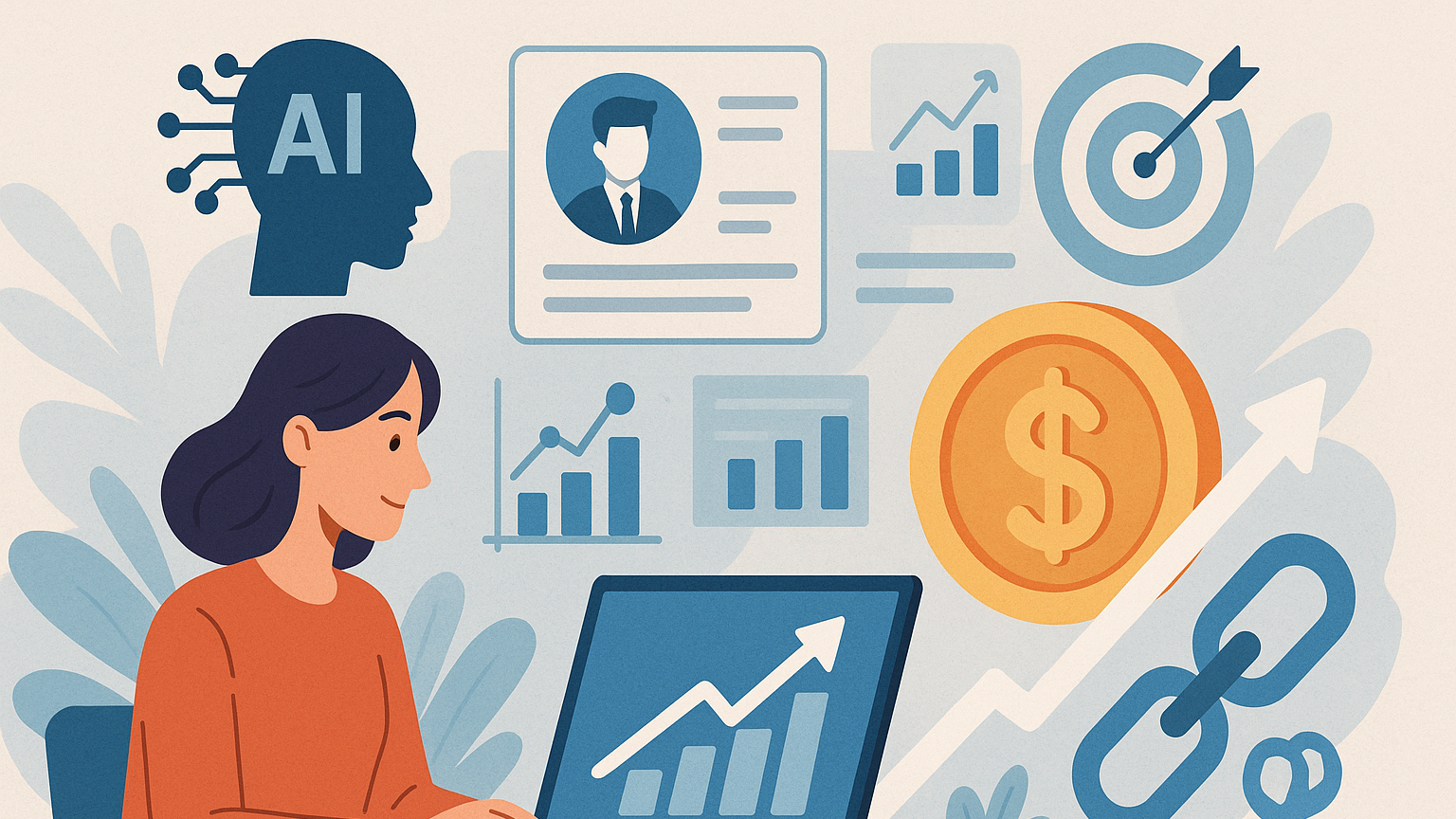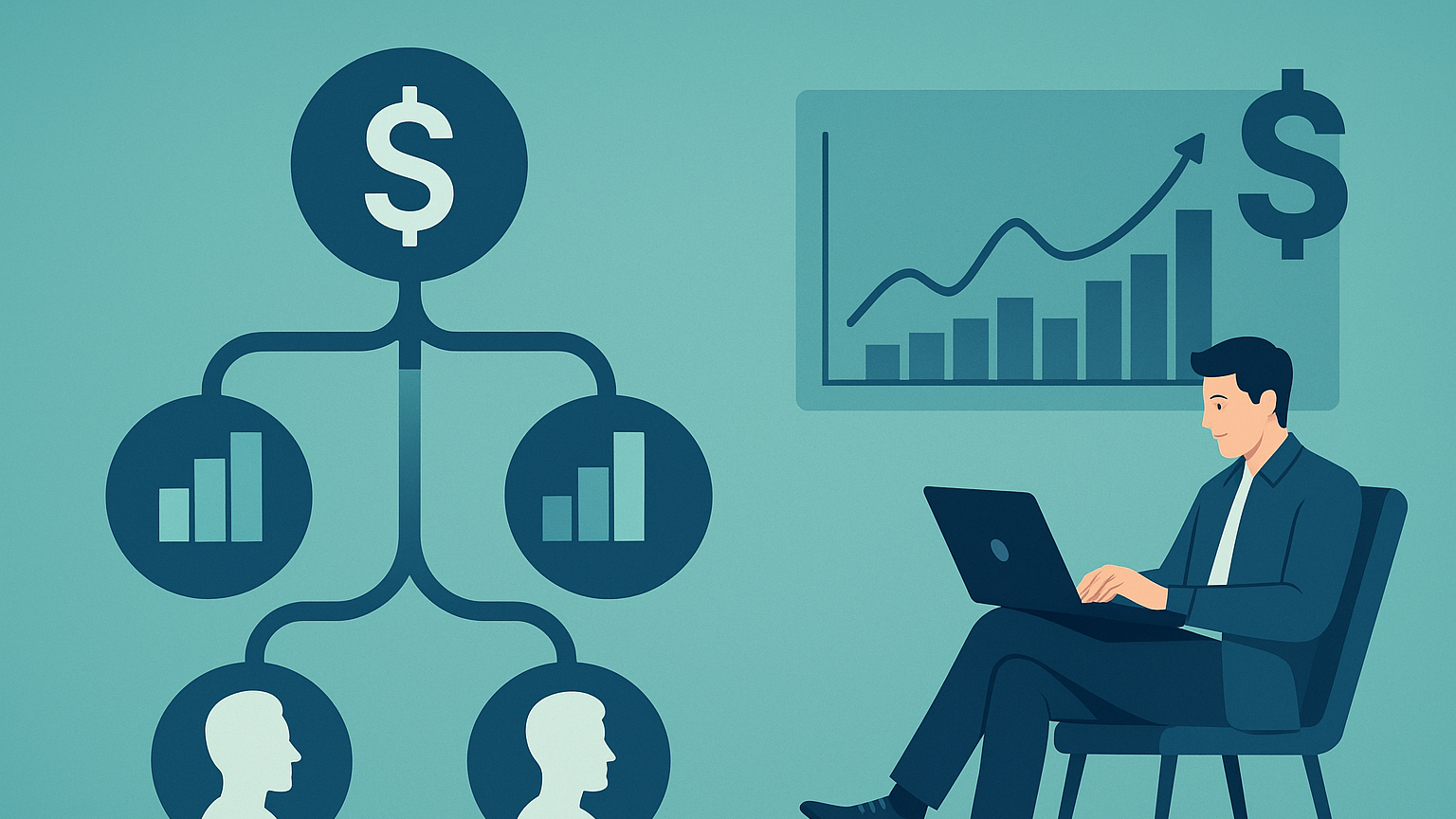
AI driven Customer lifetime value modeling for actionable customer insights
You already know that not all customers are created equal. Some will repeatedly buy from you, advocate for your brand, and cost little to serve, while others will be one-off purchasers or expensive to retain. Customer lifetime value (CLV) models help you quantify those differences so you can prioritize investments, tailor experiences, and ultimately grow profitably. With AI, CLV modeling becomes more accurate, dynamic, and actionable — giving you the predictive power to shape customer strategies rather than just report on them. This article walks you through how AI changes the CLV game, what data and models you should use, how to turn outputs into decisions, and how to operationalize and govern CLV in your business.
Why CLV matters for your business
CLV is the single most important customer-centric metric for strategic planning and resource allocation. When you understand the expected future value of a customer, you can allocate acquisition budget more efficiently, decide how much to invest in retention, design loyalty programs with measurable ROI, and set realistic growth targets. CLV helps you move from vanity metrics like sign-ups and raw revenue to profit-oriented decisions that align cross-functional teams. It’s also the metric that ties marketing and product initiatives directly to the bottom line, making it indispensable for business development and market analysis.
Traditional CLV approaches and their limitations
Traditional CLV models often use simple rules or averages, such as RFM (recency, frequency, monetary) scoring, cohort-level lifetime averages, or deterministic lifetime multipliers. These approaches are easy to implement and intuitive, but they lack granularity and predictive power. They treat customers within a cohort as homogeneous, ignore non-linear relationships in behavior, and fail to incorporate rich contextual signals like product interactions or customer service history. That makes them poor at supporting personalized interventions or estimating the impact of specific actions on future value. You need more sophisticated methods if you want CLV to drive nuanced, revenue-generating decisions.
What AI brings to CLV modeling
AI brings two big advantages to CLV modeling: improved predictive accuracy and richer input handling. Machine learning models can learn non-linear relationships across hundreds of features, handle missing data gracefully, and incorporate unstructured signals like text and images. AI can also model uncertainty and provide probabilistic forecasts of future behavior, enabling you to separate high-confidence opportunities from risky bets. Most importantly, AI enables near-real-time updates, so your CLV estimates can reflect the latest customer interactions and support timely, personalized actions.
Tree-based models and ensemble learners
If you’re getting started, tree-based models such as gradient-boosted trees (XGBoost, LightGBM, CatBoost) are often the workhorses for CLV prediction. They perform well with tabular data, require minimal feature scaling, and give you quick wins in predictive performance. You can use them to predict either monetary outcomes (future spend) or probability outcomes (likelihood of churn, next purchase), and they naturally handle interactions between features. When combined into ensembles and tuned with cross-validation, these models give you reliable baseline CLV forecasts that are easy to interpret and deploy.

Neural networks and embeddings
For large datasets or when you have sequence and unstructured data, neural networks offer advantages. Recurrent architectures or transformers can model sequences of transactions, capturing temporal patterns that static features miss. Embeddings can convert categorical items like SKUs, campaign IDs, and browsing paths into dense vectors that encode similarities between products and behaviors. When you combine transaction sequences with embeddings and attention mechanisms, the models can learn nuanced purchase rhythms and product affinities that drive lifetime spend.
Probabilistic and survival models
Probabilistic approaches like BG/NBD (Beta-Geometric/Negative Binomial Distribution) paired with Gamma-Gamma monetary models provide a strong statistical foundation for CLV. These models estimate purchase frequency and monetary value probabilistically, allowing you to quantify uncertainty. Survival analysis techniques — used to model time-to-event like churn — also help when your outcome of interest is retention or time between purchases. These methods are especially valuable when data is sparse or when you need principled intervals for forecasting.
Causal models and uplift modeling
Predictive accuracy is necessary but not sufficient. To make CLV actionable, you need to know how interventions change outcomes. Causal models and uplift modeling estimate the incremental effect of offers, price changes, or outreach on customer behaviors. Techniques such as treatment effect estimation, double machine learning, and causal forests help you identify who will meaningfully increase in value when you invest in them — and who will not. This lets you optimize marketing spend and personalize interventions based on expected incremental lift rather than predicted outcomes alone.

Data you need for AI-driven CLV
You cannot build reliable AI CLV models without quality data. Core inputs include transactional history (dates, amounts, SKUs), channel and campaign attribution, product and pricing details, customer demographics and firmographics, interaction logs (web, app, call center), and support tickets. For profit-aware CLV, you’ll need cost data, margins, and operational serving costs. Enrichments like third-party economic indicators, seasonality markers, and competitor pricing can improve forecasts. Always assess data lineage and reliability before modeling; garbage in, garbage out applies even more to predictive AI.
- Transaction logs, product catalog, customer profiles, marketing exposure, support interactions, and cost/margin data are typical sources.
Feature engineering for CLV
Feature engineering often determines the success of CLV models. RFM features are a must, but you should expand them to include rolling aggregates (30/90/365 days), recency of last return or support contact, average order interval, product affinity vectors, time-decayed spend, channel preference scores, and promotional responsiveness. Sequence-based features — for example, the pattern of days between purchases — can be transformed into summary statistics or fed directly into sequence models. Behavioral signals like browsing depth, abandoned carts, and email engagement are predictive of future spend. Finally, build margin-aware features by combining revenue with product-specific cost to estimate true contribution.


Handling cold start and sparse data
Cold start remains a hard problem, especially for new customers or new products. You can mitigate cold start with hierarchical or Bayesian models that borrow strength from similar groups, or by using content-based features such as product attributes, customer signup source, and initial browsing signals. Transfer learning and pre-trained embeddings from other parts of your business also help. Another strategy is to use short-term proxies — first-week conversion propensity, early engagement metrics, or micro-transactions — to bootstrap CLV predictions until enough data accumulates.
Ensuring explainability and trust
Your marketing and finance colleagues will demand explanations for CLV estimates, especially when they drive budget decisions. Explainability techniques like SHAP values, partial dependence plots, and feature importance rankings help you communicate why the model assigns value to a customer. Surrogate models — simpler models fit to mimic complex model outputs — can provide business-friendly rules for frontline use. You should also present uncertainty alongside point estimates so decision-makers understand confidence levels; for example, “This customer’s CLV is $1,200 ± $300 with 90% probability.”
Integrating CLV into decision-making
Predictions only become valuable when they influence decisions. Align CLV outputs with business processes: feed them into customer segmentation, budget allocation, churn prevention, loyalty program tiering, and acquisition bidding strategies. Use CLV-based bidding to increase acquisition spend on audiences with high expected LTV but still control cost-per-acquisition (CPA). In support and success teams, prioritize interventions for high-CLV customers. Integrating CLV into your CDP or CRM systems ensures frontline teams have access to the predictions when they need to act.
Turning CLV predictions into actions
Operationalizing CLV means translating model outputs into concrete plays: personalized campaigns, differentiated retention programs, dynamic pricing, bundling recommendations, or service-level prioritization. For example, you may offer targeted onboarding incentives to customers with high predicted lifetime but low initial engagement, or you might reduce acquisition spend on segments with low margin-adjusted CLV. Use incremental tests to validate that actions driven by CLV causally increase profit. Over time, automate decisions using rule engines or ML-driven orchestration that reference CLV and its uncertainty.
Measuring impact and ROI
You must measure the impact of CLV-informed interventions to prove value and iterate. Set up experiments and holdout groups to quantify uplift in retention, average revenue per user, and profit. Compare predicted CLV to realized outcomes to calibrate models and identify systematic biases. Track business KPIs like customer acquisition cost (CAC), payback period, and cohort profitability. Always measure margin-adjusted CLV rather than raw revenue so you’re optimizing for profitable growth rather than top-line expansion alone.

Governance, ethics, and privacy
Implementing AI-driven CLV responsibly requires governance around data usage, fairness, and privacy. Follow regulatory frameworks like GDPR and CCPA: secure consent, limit data retention, and allow customers to exercise data rights. Be mindful of fairness — some demographic groups may systematically receive lower predicted CLV due to historical biases; ensure you’re not perpetuating discrimination. Apply data minimization and anonymization where possible, and maintain documentation of data lineage, model assumptions, and decision rules to support audits and compliance.
Deployment and MLOps for CLV models
You’ll lose value if CLV models sit in notebooks. Build robust data pipelines, automated repeatable training, model validation steps, and deployment processes. Decide which use cases need near-real-time scoring (e.g., on-site personalization) versus batch scoring (e.g., weekly segmentation refresh). Use feature stores to ensure consistency between training and production features, and set up monitoring for data drift and model performance degradation. Having clear retraining triggers and rollback mechanisms helps maintain reliability and trust from stakeholders.
Technology stack and tools
Choose tools that align with your scale and team capabilities. Python libraries like scikit-learn, XGBoost, LightGBM, and PyTorch handle most modeling needs. For sequence and embedding work, use libraries like TensorFlow or PyTorch with transformer architectures. Production infrastructure can live on major cloud providers (AWS, GCP, Azure) or managed platforms (Databricks, Dataiku). CDPs (Segment, mParticle), feature stores (Feast, Tecton), and orchestration tools (Airflow, Dagster) simplify data flow and real-time usage. The right stack will depend on latency requirements, team skills, and the volume of data you process.
Cross-functional collaboration and organizational change
CLV is not just a data science project; it’s an organizational capability that requires buy-in from marketing, finance, product, sales, and operations. You should start with use cases that are small but measurable and build advocates by demonstrating quick wins. Create cross-functional governance forums that define business requirements, metric definitions, and KPIs. Educate stakeholders on model limitations and what the predictions mean in practice, emphasizing the need for human oversight in high-impact decisions. Embedding analytics in operational workflows accelerates adoption and produces better business outcomes.
Retail and e-commerce considerations
In retail and e-commerce, product lifecycles, seasonality, promotions, and returns materially affect CLV. You’ll need SKU-level margins, return rates, and promo sensitivity in your models. Sequence models that capture browsing-to-purchase funnels and basket composition can inform product recommendations that increase lifetime value. Inventory constraints and fulfillment costs also matter — a high predicted CLV that’s unprofitable because of high delivery costs should be treated differently from a similarly valued but low-cost customer.
SaaS and subscription businesses
For SaaS, CLV is often expressed as recurring revenue over time and can be modeled with churn probability and expansion (upsell) predictions. You should model contract terms, usage patterns, feature adoption, and support tickets, as these are strong signals of retention and expansion. For enterprise SaaS, incorporate account-level features and sales cycle data. Use survival models for churn prediction and causal models to evaluate which onboarding or success interventions drive contract renewals and upgrades.
Financial services and telecom
In financial services and telecom, regulatory constraints and privacy requirements are stricter, and customer lifetime behaviors are long and complex. Fraud, compliance interactions, and credit risk influence CLV. You should integrate credit risk models, transaction patterns, and product cross-sellability into CLV estimates. These sectors also benefit from explainable models because decisions often require regulatory or audit justification.
CPG and physical goods manufacturers
In consumer packaged goods and manufacturers, CLV depends on purchase frequency, distribution channels, and brand loyalty. Offline sales and third-party retail relationships add data fragmentation; integrating POS and retailer data helps. Consider using market-mix models and attribution techniques to understand how trade promotions and pricing affect long-term customer behavior across channels.
Common pitfalls and how to avoid them
You’ll encounter predictable pitfalls if you’re not careful. Data leakage, where future information leaks into training data, will lead to overly optimistic models that fail in production. Overfitting to historical patterns without accounting for changing behavior or market conditions makes models brittle. Focusing solely on accuracy metrics like RMSE without evaluating downstream business metrics results in models that don’t improve profit. Finally, ignoring costs and margins will have you optimizing for the wrong objective. Prevent these issues with strong validation protocols, business-aligned objective functions, and a focus on causal testing.
Roadmap to implement AI-driven CLV in your organization
Start with a clear business problem and a measurable success metric. Phase 1: Pilot — assemble a cross-functional team, define the use case, collect and clean data, and build a baseline model. Phase 2: Validate — run controlled experiments to test whether CLV-informed actions produce uplift. Phase 3: Operationalize — build pipelines, deploy models to production or integrate into CDP/CRM, and set up monitoring. Phase 4: Scale — extend to more segments, integrate real-time scoring, and refine with causal and uplift models. Throughout, document decisions and communicate outcomes to stakeholders.
Building for uncertainty: probabilistic CLV and confidence intervals
A single point estimate for CLV is often misleading; customers’ futures are uncertain. Probabilistic CLV models give you distributions and confidence intervals, which you can use to prioritize resources and create risk-aware policies. For example, prefer interventions where the expected uplift exceeds the cost by a comfortable margin given the uncertainty, or segment customers by both expected value and confidence level to decide where aggressive personalization makes sense.
Auditing and lifecycle management of CLV models
Regular audits are essential to maintain model health and compliance. Track model inputs, outputs, performance metrics, and business KPIs over time. Set thresholds for retraining and conduct periodic fairness checks to ensure models do not create adverse impacts across demographic groups. Maintain reproducible pipelines and model versioning so you can trace how decisions were made and roll back if necessary. Combine automated monitoring with regular human review.
Future trends and where CLV modeling is going
CLV modeling is evolving quickly. Expect more real-time and continuous learning systems that update CLV with each interaction. Generative AI will help with scenario simulation and synthetic data generation to stress-test models and improve robustness. Causal inference and reinforcement learning will enable closed-loop optimization where the system not only predicts CLV but also experiments with offers to maximize long-term value. Privacy-preserving techniques like federated learning and differential privacy will allow richer models without compromising customer data rights.
Final recommendations and checklist
Focus on business value first: pick a high-impact use case, measure ROI, and scale once you have proof. Invest in data hygiene and instrumentation — without reliable inputs, models will fail. Start with robust, interpretable models, then layer complexity where it yields tangible benefits. Prioritize explainability and governance so stakeholders trust the outputs. Finally, treat CLV as a living capability: continuously validate, measure, and iterate.
